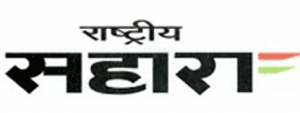12-05-2022) समाचारपत्रों-के-संपादक
 Date:12-05-22
Date:12-05-22
Don’t Just Reform – Remove
Even a changed sedition law will be misused. SC’s review must end in scrapping Section 124A
TOI Editorials
There’s never been a better moment than now for consigning to history a law that goes back to the 19th century and that free India should have never had on its statutes for so long. GoI has agreed that sedition law provisions need re-examination, and the Supreme Court has strongly restrained all authorities from filing cases under IPC Section 124A till the review is complete. The court has also rightly asked that bail be expedited for those already charged under these provisions. We should also note that Narendra Modi has added the considerable weight of his personality and office to these efforts. But all of this will amount to little if the review ends in merely “reforming” the law – sedition provisions must go.
These columns have long argued that a sedition law, in any form, is an ever-present threat to civil liberties, an invitation to authorities to misuse it, and a perfect opportunity for politicians in office to settle scores. Therefore, no matter how finely-grained a review is, and
however sincere the intent of both SC and GoI to guard against misuse of a reformed law, there’s little doubt it will be misused. The problem lies in the dangerously vague concept of ‘sedition’. State and local authorities will always find a way to use it as a blunt instrument. And local courts, as is wellestablished, very rarely question FIRs based on such laws. Remember that quite a few attempts were made to fine-tune the law to prevent its brute-force application.
The 1962 Kedar Nath Singh judgment by SC attempted to narrow sedition’s application to instances betraying an “intention” and “tendency” to cause public disorder or endanger the security of the state. But words like “hatred”, “contempt”, “disaffection”, which were in the colonial era law and are still present in provisions, and words like “intention” and “tendency”, lend themselves to broad and subjective interpretations. Such subjectivity simply cannot be removed by tweaking the law. There was also the 1995 Balwant Singh judgment by SC that said mere sloganeering doesn’t amount to sedition. That, too, has had little effect. Slogans and now tweets and chants are seen as enough for slapping a sedition case. Therefore, the process underway now must end in erasing this blot on India’s democracy.
Sedition is of course not the only law that threatens civil liberties and is misused against critics of those in office. UAPA is a prime example of another law that needs a relook. Higher courts, and even some lower courts, have already made caustic observations on police use of UAPA as atool of repression and harassment. Terrorism is cited as a justification for UAPA, but even granting that, the law needs to be pared down.
Date:12-05-22
Marital Rape Is Rape
Delhi HC verdict is a setback. But judiciary remains the best hope for gender justice
TOI Editorials
Delhi high court’s split verdict on criminalising marital rape is a setback for the legal battle to rid IPC Section 375 of the exception clause, which stipulates that “sexual intercourse or sexual acts by a man with his own wife” isn’t rape. Justice Rajiv Shakdher ruled the exception unconstitutional, terming it violative of Article 14, Article 15, Article 19(1) and Article 21. Justice C Hari Shankar upheld the provision noting that the exception carved for marital relationships was based on intelligible differentia and was reasonable.
The UK in 1991 and several post-colonial nations have criminalised marital rape leaving India in a strange club with the likes of Bangladesh, Nigeria, Iran, Saudi Arabia etc. GoI must change tack. Its affidavit that
the issue shouldn’t be “treated merely as a question concerning constitutional validity of a statutory provision” because of “far-reaching socio-legal implications for the country” was unfortunate. Such arguments reduce constitutionally guaranteed rights to abstractions. The reality is that fundamental rights have helped citizens discover agency, dignity and self-preservation.
Making consent immaterial in a marital relationship has the effect of reducing Article 14, which guarantees to every citizen equality before law and the equal protection of all laws, to a high-sounding principle without substance for an assaulted woman. It puts those wives on a weaker footing against husbands who repeatedly “rape” them knowing fully well that the law shields them. Seen in this light, arguments that marital rape cases will damage the institution of marriage are particularly tone-deaf. During the Supreme Court’s hearings to decriminalise adultery, GoI had termed it a threat to the sanctity of marriage. Given such arch-conservative posturing, neither executive nor legislature is likely to address marital rape. This makes the judiciary the best hope for gender justice. It must fast-track appeals against this verdict.
![]() Date:12-05-22
Date:12-05-22
VPNs, Give Internet Privacy Public Value
ET Editorials

A ban on VPNs, as contemplated by Indian lawmakers, would be a blunt tool with security concerns scuttling legitimate online commerce. There are ways to get around firewalls, like the one China has built. Smart policing would have to turn its attention to the entry and exit points of these private networks, which involves multilateral coordination in law enforcement. Much like landing areas in the real world needing surveillance more than sea lanes. Coordinated action by police forces in the West is being used to take down VPN services that are used for cybercrime. That remains a continuous law enforcement endeavour.
Setting special disclosure requirements in excess of court orders in the course of criminal investigation could push VPNs beyond Indian jurisdiction, negating the original intention of the rules that are to come into force. VPNs actualise the right to be forgotten, a movement gaining currency in most liberal democracies. That involves not keeping logs in the internet’s private spaces.
 Date:12-05-22
Date:12-05-22
Frozen sedition
The Government must heed the spirit of Supreme Court order and help prevent misuse of sedition law
Editorial
In a substantial blow in favour of free speech, the Supreme Court has effectively suspended the operation of the sedition provision in the country’s penal law. “All pending trials, appeals and proceedings with respect to the charge framed under Section 124A be kept in abeyance”, it has said in an order that will bring some welcome relief to those calling for the abrogation of Section 124A of the IPC, which criminalises any speech, writing or representation that “excites disaffection against the government”. The Court has recorded its hope and expectation that governments at the Centre and the States will refrain from registering any fresh case of sedition under Section 124A of the IPC, or continuing with any investigation or taking any coercive measure under it. The hope and the expectation arise from the Union government’s own submission that it has decided to re-examine and reconsider the provision as part of the Prime Minister’s efforts to scrap outdated laws and compliance burdens. Perhaps, realising that its order may not be enough to deter thin-skinned and vindictive governments and politically pliant police officers from invoking it against detractors and dissenters, the Court has given liberty to the people to approach the jurisdiction courts if any fresh case is registered for sedition and cite in their support the present order, as well as the Union government’s stand.
That the sedition law is being persistently misused has been recognised years ago, and courts have pointed out that the police authorities are not heeding the limitation imposed by a 1962 Constitution Bench of the Supreme Court on what constitutes sedition. The Court had upheld the section only by reading it down to mean that it is applicable only to “acts involving intention or tendency to create disorder, or disturbance of law and order, or incitement to violence”. In practice, the police have been using the broad definition of sedition to book anyone who criticised the Government in strong and strident language. The question now before the Court is whether it ought to overrule a decision rendered by a five-judge Bench 60 years ago. If it chooses to do so, and strikes down Section 124A as an unconstitutional restriction on free speech, it may help the larger cause of preventing misuse of provisions relating to speech-based offences. However, the Government may choose to prevent such a situation by amending it so that the offence is narrowly defined to cover only acts that affect the sovereignty, integrity and security of the state, as reportedly recommended by a panel of experts. When the Government submitted that it was revisiting the provision on its own, it was expecting only an indefinite postponement of the hearing on the constitutional validity of Section 124A, but it must now heed the spirit of the order and take effective steps to prevent its misuse.
Date:12-05-22
Engage, not dismiss
Excess deaths measures are a robust way to estimate pandemic impact
Editorial
The release of a report by WHO that estimates excess deaths during the COVID-19 pandemic to be nearly 10 times the reported COVID-19 death toll of 4.8 lakh in India between January 2020 and December 2021, the highest for any country, is not surprising. The pandemic did not just contribute to a surge in disease-related mortality, especially of the aged and the infirm, but also disrupted health systems that could have resulted in many other avoidable deaths. A robust estimation of the excess deaths was necessary to understand the pandemic effect in India where death registration after occurrence is not universal across States and medical certification of deaths is quite low in number. The Government has strongly denied the numbers and dismissed the methodology by saying that the WHO approach is based on modelled estimates and not actual data. It countered it by finally releasing the Civil Registration System report for 2020 (two days prior to the release of the WHO report) and saying that the cumulative increase in the number of deaths in 2020 was only 4.74 lakh, lower than the corresponding number for 2019. While most deaths — close to two thirds — occurred during the second wave in India from March to June 2021 (and later in some States such as Kerala), and therefore the late release of the CRS 2020 report does not entirely negate the WHO estimates that are based on registered deaths data available from “sub-national” units, there is indeed a discrepancy for 2020 data.
The WHO estimates for States were based on CRS registration data obtained by news organisations — the bulk of them by The Hindu. For 2020, cumulatively, the excess deaths estimations (close to 5.5 lakh for 12 States) for most such States for which data were obtained, match the CRS 2020 calculations (5.3 lakh). Discrepancies are quite high for those States where CRS data were only partially or not available earlier. A case in point is Uttar Pradesh where death (8.73 lakh in 2020 vs 9.45 lakh in 2019) and birth registrations (48.5 in 2020 vs 51.3 lakh in 2019) fell significantly and therefore skewed the overall country-wide excess deaths numbers. But without the release of the Sample Registration System data, it is difficult to believe that in States such as U.P., there has been an increase in registration levels even while there is a decrease in actual birth and death registration. The NFHS-5 2021 interviews show that death registration in 2020 was lower than previous years as opposed to the Government’s claims based on CRS 2020. The Government must not dismiss the WHO estimates and should instead look at undertaking its own exercise on excess deaths based on registration data in the CRS/SRS. After all, other methods, including surveys, have corroborated the fact that there was a high under-reporting of COVID-19 deaths during the pandemic.
 Date:12-05-22
Date:12-05-22
अमीर-गरीब की खाई कम करने के उपाय करें
संपादकीय
ऑक्सफैम की रिपोर्ट के अनुसार कोरोना काल में भारत के 84% लोगों की आय घटी है। सीएमआईई ने हालिया रिपोर्ट में कहा कि बेरोजगारी पिछले पांच साल में इतनी बढ़ी है कि नौकरी की उम्र वाले 45 करोड़ लोग काम की तलाश छोड़कर वापस गांवों में चले गए हैं। लेकिन इतनी ही ताजा दो अन्य रिपोर्टें ‘उभरते’ भारत की एक अलग तस्वीर पेश करती हैं। एक अध्ययन के अनुसार विदेशी पूंजी निवेशकों के मुकाबले रिटेल निवेशकों ने लिस्टेड कंपनियों में कोरोना काल में रिकॉर्ड निवेश किया। जहां विदेशी निवेशक शेयर बाजार से पैसा निकाल रहे हैं, वहीं भारतीय रिटेल निवेशकों का बड़ा वर्ग बाजार में पैसा लगा रहा था। सेबी के अनुसार पिछले दो वर्षों में निजी रिटेल निवेशकों के डीमेट अकाउंट की संख्या (8.97 करोड़) दोगुनी हो गई है। यानी जब लॉकडाउन में लाखों बेरोजगार कामगार बच्चों को कंधे पर बैठाए गांव वापस जा रहे थे या दूसरी लहर में ऑक्सीजन या इलाज के अभाव दम तोड़ रहे थे, उस समय एक वर्ग डीमेट के जरिए शेयर मार्केट में पैसा लगा रहा था। सवाल यह है कि अगर नौकरियों के अभाव में निराश युवा गांव लौट रहा है, अगर हर छह में से पांच लोगों की आय घटी है, अगर आरबीआई के अनुसार कोरोना के दौरान हुई आर्थिक क्षति से देश को उबरने में 13 साल लगेंगे तो ये कौन लोग हैं जिनके पास इतना पैसा है कि शेयर मार्केट भी कम पड़ रहा है? लेकिन सरकार खुश है कि इस अप्रैल में जीएसटी संग्रह रिकॉर्ड ऊंचाई पर रहा। इन विरोधाभासी तथ्यों को देखते हुए आज सबसे बड़ी जरूरत है अमीर-गरीब की खाई को कम करना। तेजी से बदलते तकनीकी युग में युवाओं को स्किल देकर रोजगार/उद्यमिता के लिए तैयार करना ही एक मात्र रास्ता है।
Date:12-05-22
रोबोट नौकरियां खा जाएंगे या रोजगार के अवसर रचेंगे ?
साधना शंकर, ( लेखिका भारतीय राजस्व सेवा अधिकारी )
हाल ही में प्रकाशित एक खबर में बताया गया था कि कैसे भारतीय फैक्टरियां मैन्युफेक्चरिंग में रोबोट्स के उपयोग को बढ़ावा दे रही हैं। पंद्रह वर्ष पूर्व भारत में उद्योग-सम्बंधी गतिविधियों के लिए सौ से भी कम रोबोट बनाए जाते थे, आज उनकी संख्या सालाना छह हजार तक पहुंच गई है। यह चौथी औद्योगिक क्रांति या इंडस्ट्रीयल रिवोल्यूशन 4.0 की विशेषता है कि इसमें आधुनिक स्मार्ट टेक्नोलॉजी, रोबोटिक्स और इंटरनेट ऑफ थिंग्स का इस्तेमाल करते हुए परम्परागत निर्माण प्रक्रियाओं को ऑटोमेशन की ओर ले जाया जाता है।
रोबोट शब्द की ईजाद 1920 में चेक लेखक कारेल चापेक ने की थी। उन्होंने ‘रोसुम्स यूनिवर्सल रोबोट्स’ शीर्षक से एक नाटक लिखा था। साइंस फिक्शन ने इस विचार को अपनाया। उन्होंने मनुष्यों जैसी दिखने वाली ऐसी मशीनों की परिकल्पना की, जो दुनिया को जीत लेना चाहती हैं। जबकि ऐतिहासिक रूप से रोबोट ऐसी बुद्धिमान मशीनें रहे हैं, जिनका फैक्टरियों में उपयोग किया जाता है। पर अब मनुष्यों और रोबोट के रिश्ते बदल रहे हैं। रोबोट फैक्टरियों से निकलकर हमारे सामाजिक जीवन में प्रवेश कर रहे हैं। आपमें से कइयों ने ऐसे बक्सेनुमा रोबोट्स की क्लिप्स देखी होंगी, जिन्होंने कोविड के दौरान भोजन और दवाइयों की डिलीवरी का काम किया था। भारत के अस्पतालों में अब रोबोटिक सर्जरियां भी होने लगी हैं।
रोबोट अब केवल मैकेनिकल डिवाइस नहीं हैं- वे चुस्त-चपल, सक्रिय और स्वायत्त मशीनों में बदल गए हैं, जो कार चलाने से लेकर नियोजित नगर बसाने तक सब कुछ कर सकते हैं। रोबोटिक्स का दौर आ चुका है। इसमें स्मार्टफोन तकनीक में तेजी से नवोन्मेष का मुख्य योगदान है। स्मार्टफोन के ही कारण वायरलेस कम्युनिकेशन, नैनो चिप्स, सस्ते सेंसर्स और कैमरा चलन में आए। स्मार्टफोन तकनीक ने रोबोटिक्स को भी बदला है। मशीन लर्निंग में आज जो तरक्की हुई है, उसने यह सुनिश्चित कर दिया है कि रोबोट आसपास की दुनिया के बारे में बेहतर निर्णय ले सकेंगे। अब रोबोट हमारे लिए काम नहीं करेंगे, बल्कि हमारे साथ काम करेंगे। सर्जरियों के अलावा बीमारों और बुजुर्गों के हेल्थकेयर में उनकी भूमिका बढ़ रही है। सफाई करना, चीजों को खिसकाना, यहां तक कि ओल्ड एज होम्स में मनोरंजन करना भी रोबोट का काम बन रहा है। महामारी के दौरान बेंगलुरु के एक स्टार्टअप द्वारा बनाए गए ‘मित्र’ नाम के एक रोबोट ने भारत के अनेक अस्पतालों में सेवाएं दी थीं। उसने मरीजों की रीडिंग ली और कंसल्टेशन में सहयोग दिया।
ड्राइवरलेस कारें, ट्रैफिक में मदद देने वाले ड्रोन्स, वेयरहाउस, खेती, यहां तक कि युद्ध भी : रोबोट्स सब तरफ मौजूद हैं। रूस और यूक्रेन के बीच चल रहे युद्ध में रिमोट कंट्रोल, ऑटोमेटेड सिस्टम्स और आर्टिफिशियल इंटेलीजेंस की भरपूर मदद ली जा रही है। अक्टूबर 2021 में भारत सरकार ने एक ड्रोन ट्रैफिक मैनेजमेंट पॉलिसी बनाई थी। रोजमर्रा के ऊबाऊ, दोहराव भरे या खतरनाक कामों के लिए मनुष्यों के बजाय रोबोट्स का उपयोग किया जा रहा है। इससे यह चुनौती भी निर्मित हो रही है कि कहीं रोबोट मनुष्यों की नौकरियां तो नहीं खा जाएंगे। अनेक रिसर्चरों ने पाया है कि ऑटोमेशन की तकनीकें नए रोजगार सृजित करती हैं। पचास से अधिक आयु वाले लोगों को याद होगा कि पहले एक शहर से दूसरे में बात करने के लिए ट्रंक कॉल लगाया जाता था। टेलीफोन एक्सचेंजों में कई लोग काम करते थे। लेकिन टेलीकॉम क्रांति के बाद इस क्षेत्र में नए रोजगार निर्मित हुए हैं। येल यूनिवर्सिटी के एक अध्ययन में पाया गया है कि जापान में मैन्युफेक्चरिंग में 1978 से 2017 के दौरान प्रति एक हजार कामगारों पर एक रोबोट यूनिट की स्थापना से रोजगार में 2.2 प्रतिशत की बढ़ोतरी हुई थी। आने वाले समय में क्या होगा, पूर्वानुमान लगाना मुश्किल है, लेकिन यह तय है कि नियोक्ताओं को अब लाइफलॉन्ग लर्निंग और अपने कर्मचारियों की स्किल्स में बढ़ोतरी के लिए निवेश करना होगा। वहीं दूसरी ओर हमें रोबोट्स के साथ मिलकर काम करना सीखना होगा, आगे जिनसे हमारा रोजाना वास्ता रहने वाला है।
 Date:12-05-22
Date:12-05-22
विवेकपूर्ण निर्णय
संपादकीय
सर्वोच्च न्यायालय में भारतीय दंड संहिता की धारा 124ए के तहत राजद्रोह कानून का बचाव करने के प्रयास के बाद सरकार ने इसकी ‘पुनरीक्षा और पुनर्विचार’ का निर्णय लिया है और यह बात देश में मानवाधिकारों तथा नागरिक अधिकारों के लिए काफी आशा जगाने वाली है। यह कवायद इस कानून को लेकर बढ़ती सार्वजनिक असहजता का परिणाम है और संभव है कि सर्वोच्च न्यायालय इसे निरस्त कर दे। सर्वोच्च न्यायालय ने इस दिशा में पहल करते हुए आदेश दिया है कि राजद्रोह के सभी लंबित मामलों को स्थगित रखा जाए तथा पुलिस और प्रशासन को सलाह दी है कि केंद्र की समीक्षा पूरी होने तक इस धारा का इस्तेमाल न किया जाए। केंद्र ने सुझाव दिया था कि भविष्य में इस धारा के तहत मामले तभी दर्ज किए जाएं जब कि पुलिस निरीक्षक या उससे ऊंचे दर्जे का कोई अधिकारी जांच कर ले।
यह अभी भी स्पष्ट नहीं है कि सरकार कानून को समाप्त करेगी या इस कानून को लगाने की शर्तों को और कड़ा करेगी। इस समाचार पत्र ने दलील दी थी कि एक आधुनिक लोकतंत्र में ऐसे कानून की कोई जगह नहीं है। सन 1962 के ऐतिहासिक फैसले में सर्वोच्च न्यायालय ने धारा 124ए की वैधता बरकरार रखी थी लेकिन इसके दायरे को दो आधारों तक सीमित कर दिया था: क्या उक्त कार्य में हिंसात्मक प्रयासों के जरिये सरकार को गिराने का प्रयास किया गया या फिर कानून व्यवस्था को लेकर समस्या उत्पन्न की गई। हालांकि ये व्याख्याएं अपने आप में निरपवाद हैं लेकिन पुलिस और न्यायालयों ने अक्सर इनका इस्तेमाल बहुत संकीर्ण ढंग से किया है जिससे सामाजिक कार्यकर्ता और ऐसा लगभग हर व्यक्ति इसकी जद में आ गया जिसने अपने विचारों से केंद्र या राज्य सरकारों को परेशान किया। यह उल्लेखनीय है कि इस समय राजद्रोह के 800 मामलों की सुनवायी चल रही है और इसके कारण 13,000 लोग जेल में हैं।
हालांकि केंद्र सरकार ने राजद्रोह कानून की समीक्षा की कोई समयसीमा नहीं बतायी है लेकिन यह उचित अवसर है कि वह ऐसे अन्य कानूनों पर पुनर्विचार करे जो मानवाधिकारों के विपरीत हैं। इनमें से प्रमुख है गैरकानूनी गतिविधियां (रोकथाम) अधिनियम अथवा यूएपीए। इस कानून के तहत आरोपित को तब तक दोषी माना जाता है जब तक कि वह निर्दोष न साबित हो। यह बात बुनियादी संवैधानिक गारंटी के उलट है। राजद्रोह के कानून की तरह ही यूएपीए की कठोर प्रकृति तथा राज्य की इन्हें बार-बार इस्तेमाल करने की प्रवृत्ति ने विश्व स्तर पर भारत की प्रतिष्ठा को काफी क्षति पहुंचायी है और यह मुक्त समाजों को लेकर उस संयुक्त वक्तव्य की भावना के भी प्रतिकूल है जिस पर प्रधानमंत्री नरेंद्र मोदी ने गत वर्ष जून में जी 7 की आभासी बैठक में हस्ताक्षर किए थे।
राष्ट्रीय सुरक्षा कानून भी बहुत कड़ा है और वह किसी भी व्यक्ति को बिना किसी आरोप के एक साल तक कैद में रखने की इजाजत देता है। उस पर भी पुनर्विचार होना चाहिए।
इन विषयों पर सकारात्मक ढंग से आगे बढ़कर ही देश के मानवाधिकार रिकॉर्ड को मजबूत किया जा सकेगा। हाल के दिनों में पश्चिमी लोकतांत्रिक देशों ने इसकी काफी आलोचना की है। ये ऐसे देश हैं जो व्यापार और रक्षा के क्षेत्र में भारत के लिए काफी जरूरी हैं। इस दिशा में एक अहम कदम तब लिया गया जब सशस्त्र बल विशेष अधिकार अधिनियम को देश के पूर्वोत्तर हिस्सों में आंशिक रूप से हटाया गया। इस क्षेत्र तथा जम्मू कश्मीर में इस अधिनियम को लंबे समय से सेना द्वारा मानवाधिकार हनन के औजार के रूप में देखा जा रहा था और इसने भारतीय राज्य और सशस्त्र बलों को इन क्षेत्रों के लोगों से अलग-थलग करने में अहम भूमिका निभायी। इस कानून की समीक्षा भी काफी समय से लंबित है।
 Date:12-05-22
Date:12-05-22
ढूंढा जाए स्थायी हल
डॉ. सुरजीत सिंह गांधी
 भारत में बढ़ती बेरोजगारी अपने खतरनाक स्तर तक पहुंचे, इससे पहले ही इस दिशा में गंभीर प्रयास करने होंगे। सेंटर फॉर मॉनिटिरंग इंडियन इकोनॉमी (सीएमआईई) के नवीनतम आंकडें इस चिंता को और बढाते हैं। बेरोजगारी की दर मार्च माह में 7.6 प्रतिशत थी जो अप्रैल में बढकर 7.83 प्रतिशत हो गई है। शहरी बेरोजगारी दर भी 8.28 प्रतिशत से बढ़कर 9.22 प्रतिशत हो गई है। सरकार द्वारा मनरेगा पर विशेष ध्यान देने के कारण इसी अवधि में ग्रामीण बेरोजगारी की दर 7.29 प्रतिशत से घटकर 7.18 प्रतिशत रह गई है। 2017-2022 तक श्रमिक सहभागिता दर 46 प्रतिशत से घटकर 40 प्रतिशत रह गई है। बेरोजगारी की समस्या युवाओं में इतनी निराशा भर रही है कि वे नशा, ड्रग्स आदि के साथ असामाजिक कार्यों में संलग्न होने लगते हैं। नित्यानंद राय द्वारा राज्य सभा में पेश आंकडों के अनुसार 2018 से 2020 तक 9140 लोगों ने बेरोजगारी की वजह से आत्महत्या कर ली थी।
भारत में बढ़ती बेरोजगारी अपने खतरनाक स्तर तक पहुंचे, इससे पहले ही इस दिशा में गंभीर प्रयास करने होंगे। सेंटर फॉर मॉनिटिरंग इंडियन इकोनॉमी (सीएमआईई) के नवीनतम आंकडें इस चिंता को और बढाते हैं। बेरोजगारी की दर मार्च माह में 7.6 प्रतिशत थी जो अप्रैल में बढकर 7.83 प्रतिशत हो गई है। शहरी बेरोजगारी दर भी 8.28 प्रतिशत से बढ़कर 9.22 प्रतिशत हो गई है। सरकार द्वारा मनरेगा पर विशेष ध्यान देने के कारण इसी अवधि में ग्रामीण बेरोजगारी की दर 7.29 प्रतिशत से घटकर 7.18 प्रतिशत रह गई है। 2017-2022 तक श्रमिक सहभागिता दर 46 प्रतिशत से घटकर 40 प्रतिशत रह गई है। बेरोजगारी की समस्या युवाओं में इतनी निराशा भर रही है कि वे नशा, ड्रग्स आदि के साथ असामाजिक कार्यों में संलग्न होने लगते हैं। नित्यानंद राय द्वारा राज्य सभा में पेश आंकडों के अनुसार 2018 से 2020 तक 9140 लोगों ने बेरोजगारी की वजह से आत्महत्या कर ली थी।
इस समस्या का जिम्मेदार किसे माना जाए- सरकारों को, नीतियों को, रोजगारविहीन विकास को, शिक्षा को या बढ़ती जनसंख्या को। हर युवा को जब तक काम ही नहीं मिलेगा तब तक भारत, चीन की तरह जनांकिकीय लाभ लेने में भी असमर्थ ही रहेगा। इस बात की नितांत आवश्यकता है कि उन कारणों की तलाश की जाए कि आखिर भारत में विकास वृद्धि के साथ रोजगार क्यों नहीं बढ़ रहा है। न्यूनतम सरकार की विचारधारा के कारण रोजगार के नये अवसरों पर कितना प्रभाव पड़ रहा है। ब्रेन ड्रेन बढ़ने से देश के आर्थिक विकास पर कितना प्रभाव पड़ रहा है। मैकिन्से ग्लोबल इंस्टीट्यूट की 2020 की एक रिपोर्ट के अनुसार युवाओं की संख्या के साथ तालमेल बनाए रखने के लिए भारत को 2030 तक कम से कम 90 मिलियन नये गैर-कृषि रोजगार सृजित करने की आवश्यकता है। भारत में प्रति वर्ष लगभग एक करोड़ नये लोग बेरोजगारी में शामिल हो जाते हैं। हालांकि स्थिति इतनी विकट भी नहीं है कि इस समस्या सुलझाई ही न जा सके। भारत को अब नये आर्थिक सुधारों की जरूरत है। आज भी सर्वाधिक रोजगार कृषि क्षेत्र ही प्रदान कर रहा है। संरचनात्मक परिवर्तन के साथ प्राथमिक क्षेत्र के स्थान पर द्वितीयक क्षेत्र को विकास का इंजन बनाना होगा। रक्षा, अंतरिक्ष जैसे सुरक्षा से जुड़े महत्त्वपूर्ण और संवेदनशील क्षेत्रों को छोड़कर अन्य क्षेत्रों में प्रत्यक्ष विदेशी निवेश को बढ़ावा देकर भारतीय अर्थव्यवस्था को विनिर्माण हब बनाने के साथ ही निर्यात आधारित बनाना होगा। बुनियादी आर्थिक ढांचे पर विशेष बल द्वारा तीनों क्षेत्रों के फॉर्वड और बैकर्वड लिंकेज को मजबूत करना होगा। एमएसएमई, प्रधानमंत्री मुद्रा योजना, स्टार्ट अप आदि कार्यक्रमों को और अधिक गति देने के लिए प्रक्रियात्मक कार्यवाही को आसान करना होगा। सब तरह की समस्यायों का निराकरण एक ही छत के नीचे होना चाहिए। बेरोजगारी के आंकड़ों का संकलन, विश्लेषण एवं इस दिशा में कार्य करने के लिए राष्ट्रीय बेरोजगार नीति बनाई जानी चाहिए। युवाओं में स्किल गैप को कम करने के लिए प्रधानमंत्री कौशल विकास योजना के अंतर्गत दिया जाने वाला प्रशिक्षण उद्योगों की आवश्यकताओं के अनुसार उद्योगों में ही होना चाहिए। कर प्रोत्साहन द्वारा ऐसी औद्योगिक इकाइयों का विकास किया जाना चाहिए जिनमें रोजगार के साथ-साथ उत्पादकता बढ़ाने पर भी बल हो।
अनौपचारिक क्षेत्र को मुख्य आर्थिक धारा से जोड़ने के लिए असंगठित क्षेत्र में कार्य करने वाले श्रमिकों के लिए बहुस्तरीय पहल करनी होगी। रोजगार की संभावनाओं वाले क्षेत्रों जैसे पर्यटन, रिटेल सेक्टर, निर्माण व्यवसाय, स्वास्थ्य, डिजिटल माकेंटिंग, क्लाउड कम्प्यूटिंग आदि को प्रोत्साहन दिया जाना चाहिए। भारत की 49 प्रतिशत महिलाओं का आर्थिक उत्पादन में योगदान मात्र 18 प्रतिशत है। कुल श्रम शक्ति में महिलाओं के योगदान को बढ़ाने के लिए विशेष ध्यान दिए जाने की आवश्यकता है। मनरेगा में भ्रष्टाचार को भी खत्म करने की जरूरत है। देश को एक नई जनसंख्या नीति पर भी विचार करने की आवश्यकता है, ताकि आने वाली पीढ़ियों के लिए संसाधनों तक पर्याप्त पहुंच बन सके।
वर्तमान में इंटरनेट ने हमारे जीवन जीने के तरीके को ही बदल दिया है। तकनीकी इतनी तेजी से बदल रही है कि सरकार और युवाओं, दोनों को ही इसके लिए तैयार रहना होगा। सरकार द्वारा रोजगार हितैषी वातावरण बनाने के लिए विभिन्न प्रतियोगी परीक्षाओं को लीक प्रूफ निश्चित, समय सारिणी बनानी होगी ताकि नौकरी की तलाश में युवाओं के महत्त्वपूर्ण वर्ष बर्बाद न हो। युवाओं को भी अब इस मान्यता को बदलना होगा कि सरकारी नौकरी मिलने पर काम नहीं करना पड़ेगा। आज नौकरी के लिए डिग्री की नहीं, बल्कि आपकी योग्यता और प्रशिक्षण का मूल्य अधिक है। भारत को महाशक्ति बनाने के लिए युवा उद्यमियों और सरकार को मिलकर काम करना होगा।

